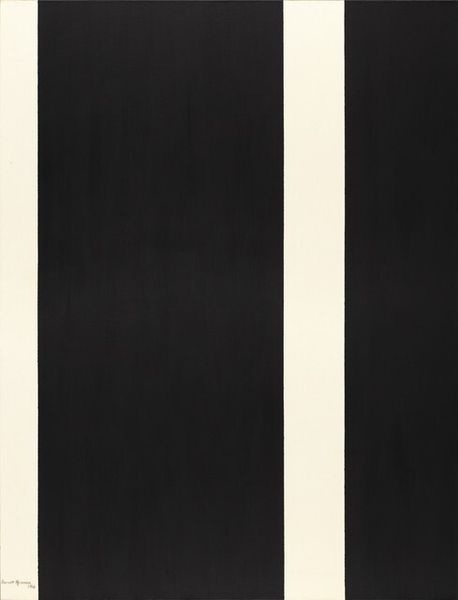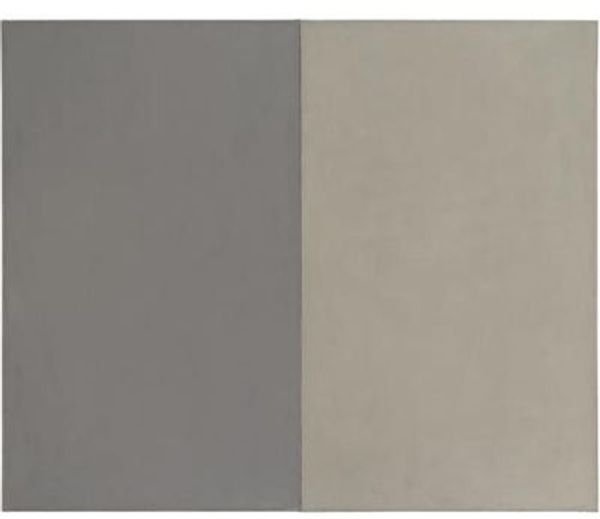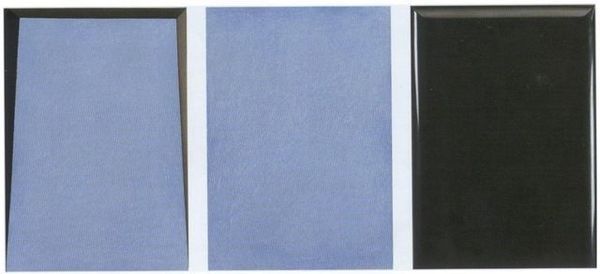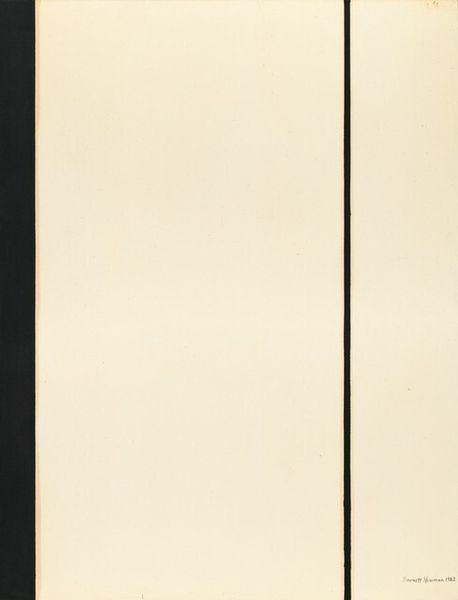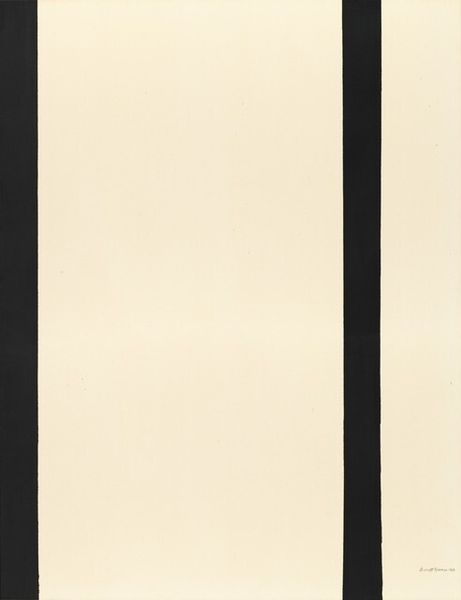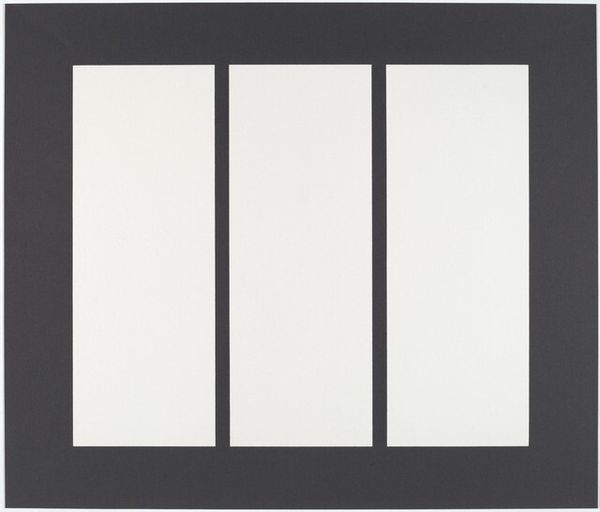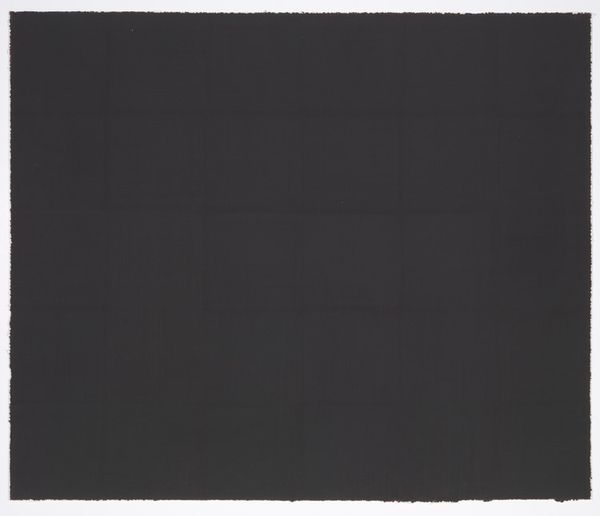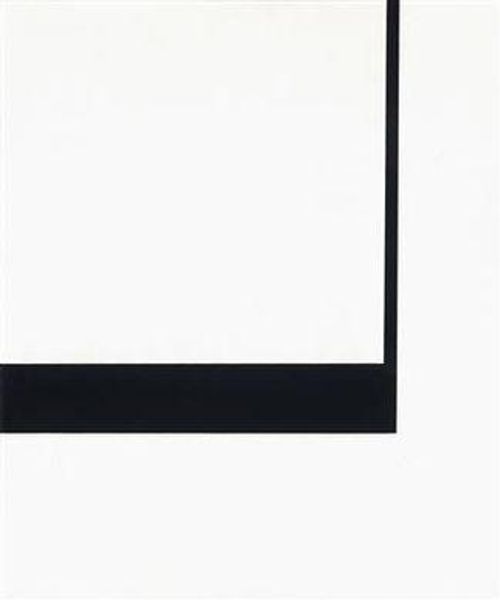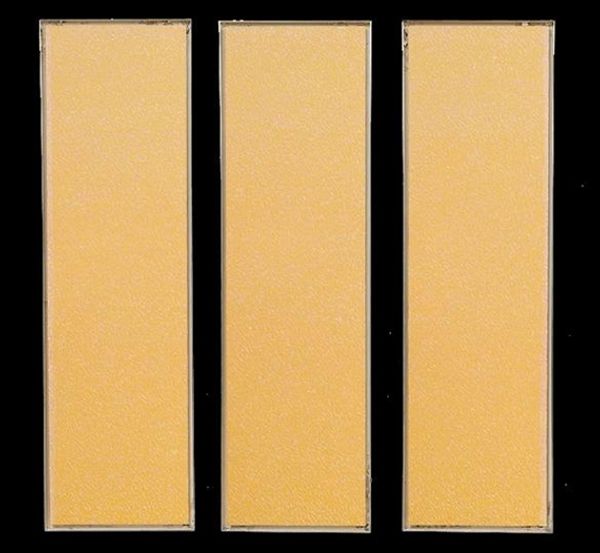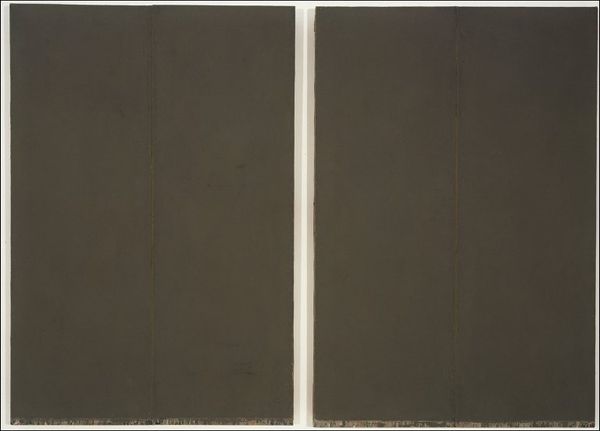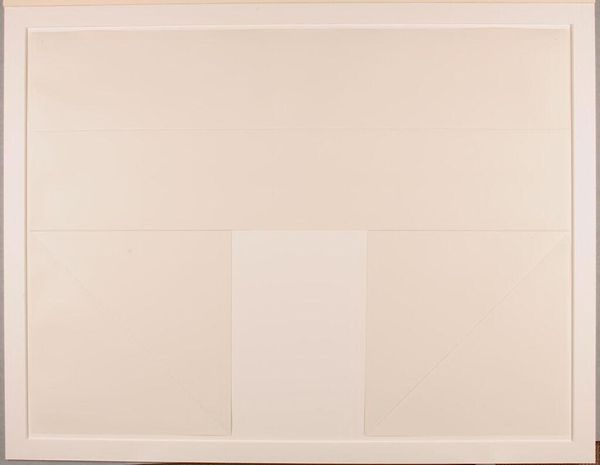
painting, acrylic-paint
#
conceptual-art
#
painting
#
minimalism
#
op art
#
acrylic-paint
#
form
#
geometric pattern
#
minimal pattern
#
geometric
#
geometric-abstraction
#
vertical pattern
#
line
#
hard-edge-painting
#
monochrome
Copyright: Alan Charlton,Fair Use
Editor: We're looking at Alan Charlton's "Untitled" from 1989, an acrylic painting of four dark, horizontal rectangles stacked evenly. There’s something austere and almost oppressive about its simplicity. What’s your interpretation of this piece? Curator: It's tempting to see Minimalism like this as purely formalist, but it emerged in a specific historical and political context. How does this systematic reduction, this seeming rejection of narrative, relate to the social upheaval of the late 20th century? Think about the ongoing struggles for civil rights, the Vietnam War, and feminist movements challenging traditional power structures. Editor: I hadn't thought about that! How does the painting itself reflect those tensions? Curator: Consider the monochrome palette. The denial of color can be seen as a rejection of a consumerist culture obsessed with visual spectacle. And the grid, endlessly repeated, can be read as both a celebration and a critique of industrialization and standardization, perhaps even paralleling the way marginalized communities are often systematically ignored or erased. What feelings does the work evoke? Editor: Initially, it felt cold. But hearing your perspective, it feels less neutral and more like a loaded silence, demanding the viewer to confront underlying structures. It definitely pushes beyond pure aesthetics. Curator: Exactly. It's less about the object itself, and more about the conversations it ignites regarding power, visibility, and the unseen forces shaping our world. Editor: I see it so differently now. Thanks for showing me those layers! Curator: My pleasure! It reminds us to always consider art a product and a reflection of its time.
Comments
No comments
Be the first to comment and join the conversation on the ultimate creative platform.
